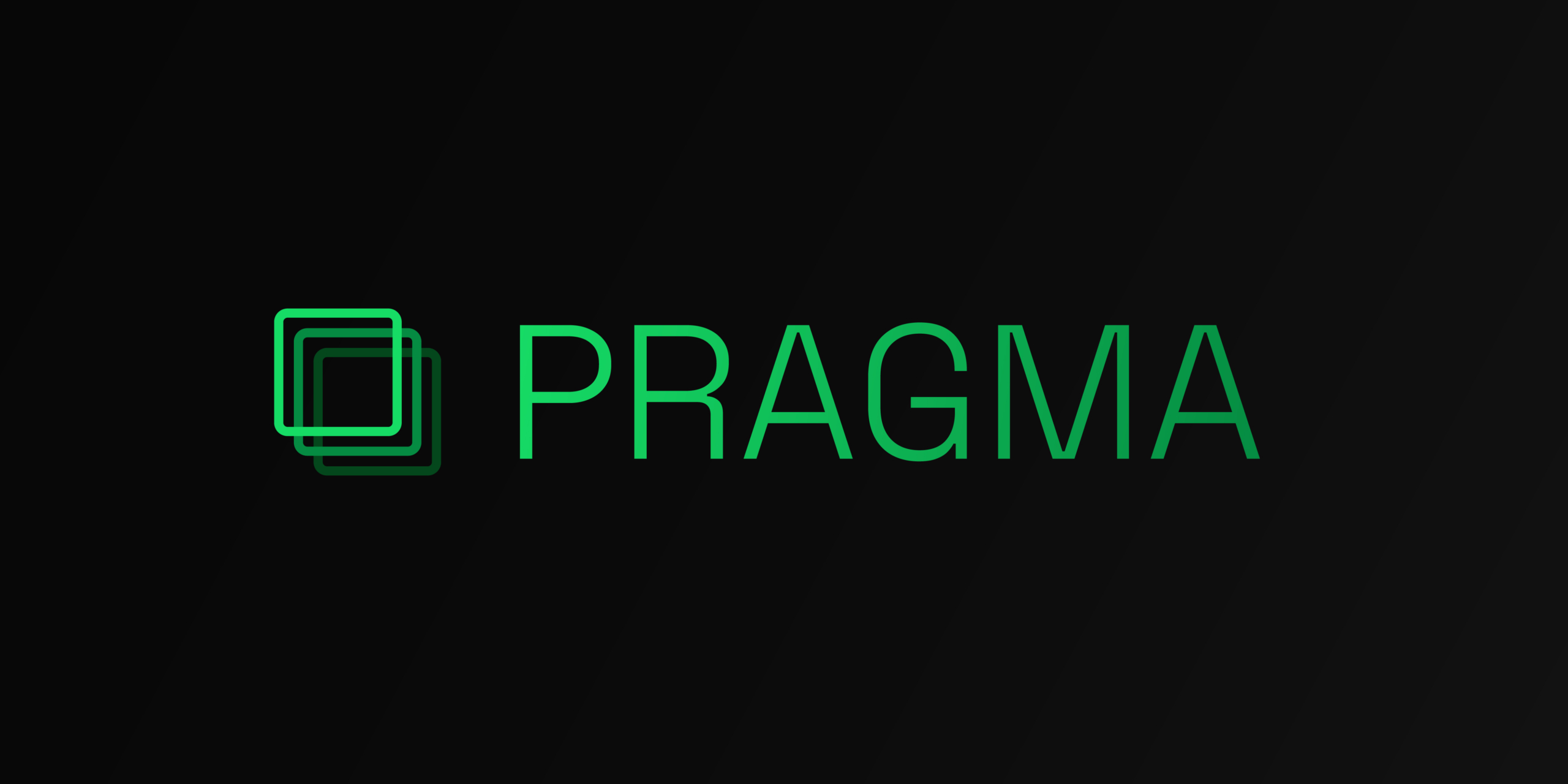Introduction
The Pragma Network emerges as a decentralized, transparent, and composable data infrastructure tailored to the crypto domain. Their esteemed collaboration with StarkWare amplifies their prominence as the foremost oracle on StarkNet. This review delves into the innovation, architecture, code quality, and other facets of the Pragma Network to provide a comprehensive perspective.
Innovation
Pragma Network encapsulates a paradigm shift in data handling by enabling high-quality publishers to onboard their proprietary data directly to the blockchain. This mechanism enhances the robustness and accuracy of Pragma, ensuring data integrity and verifiability. Pragma’s approach to on-chain data negates the need for off-chain infrastructure, making their solution more streamlined and secure.
Furthermore, the network offers a myriad of advanced computational feeds and efficient zk computations, demonstrating their commitment to innovation. The evolution from Pragma V1, an on-chain oracle on StarkNet, to Pragma V2, integrating messaging with storage proofs, also speaks volumes about their commitment to forward-thinking solutions.
Architecture
The architecture of the Pragma Network is bifurcated into two principal components: the Publisher Registry and the Oracle. The Publisher Registry, which captures the essence of permanence, is formulated to undergo infrequent updates. It acts as a repository of publishers and their corresponding addresses. On the other hand, the Oracle is the nexus through which protocols interact and to which publishers propagate data. The synergy between the Publisher Registry and the Oracle contract underpins the network’s robustness.
Additionally, their provision for a verifiable randomness feed is noteworthy, enabling protocols to solicit secure randomness directly on-chain.
Code Quality
Pragma Network’s accessibility across platforms like StarkNet, Linea, Scroll, and zkSync Era exemplifies its broad-spectrum usability. Preliminary analysis indicates that the code quality is commendable, with a clear trajectory of progressive development. Open-source access to the code further emphasizes their transparency and commitment to community engagement.
Product Roadmap
While the current offerings of Pragma Network are commendable, the roadmap’s vision, including the future phases of their verifiable randomness feed, demonstrates a forward-thinking approach. The anticipation of on-chain verification in the next phase signals a move towards greater decentralization and security.
Pragma Network Usability
Through partnerships and its presence on multiple platforms, Pragma ensures its services are cutting-edge and accessible to a diverse user base. Their initiative of allowing anyone to compose verified data without jeopardizing security or transparency paves the way for enhanced usability and versatility in the crypto landscape.
Team
Although the development team’s size is modest, their efficiency is evident from the innovative solutions and consistent developments they’ve introduced. The collaboration with industry stalwart StarkWare further accentuates their credibility and potential.
Conclusion
In summation, Pragma Network is forging new frontiers in decentralized data infrastructures. Their innovative solutions, combined with a transparent and efficient architecture, earmark them as a significant contender in the crypto space. Their commitment to evolving and enhancing the crypto ecosystem is evident from their product roadmap and partnerships. It remains an entity to watch as it continues to shape the future of DeFi.
The project is expected to score 83.64% after mainnet.
| Initial Screening | |||
| Keep researching | |||
| Does this project need to use blockchain technology? | Yes | ||
| Can this project be realized? | Yes | ||
| Is there a viable use case for this project? | Yes | ||
| Is the project protected from commonly known attacks? | Yes | ||
| Are there no careless errors in the whitepaper? | Yes | ||
| Project Technology Score | |||
| Description | Scorecard | ||
| Innovation (Out Of 11) | 9 | ||
| How have similar projects performed? | Good | 2 | |
| Are there too many innovations? | Regular | 2 | |
| Percentage of crypto users that will use the project? | 6%-10% | 3 | |
| Is the project unique? | Yes | 2 | |
| Architecture (Out of 12) | 11 | ||
| Overall feeling after reading whitepaper? | Good | 2 | |
| Resistance to possible attacks? | Good | 2 | |
| Complexity of the architecture? | Not Too Complex | 2 | |
| Time taken to understand the architecture? | 20-50 min | 1 | |
| Overall feeling about the architecture after deeper research? | Good | 4 | |
| Has the project been hacked ? | No | 0 | |
| Code Quality (out of 15) | 12 | ||
| Is the project open source? | Yes | 2 | |
| Does the project use good code like C,C++, Rust, Erlang, Ruby, etc? | Yes | 2 | |
| Could the project use better programming languages? | No | 0 | |
| Github number of lines? | More than 10K | 1 | |
| Github commits per month? | More than 10 | 2 | |
| What is the quality of the code? | Good | 2 | |
| How well is the code commented? | Good | 1 | |
| Overall quality of the test coverage? | Good | 1 | |
| Overall quality of the maintainability index? | Good | 1 | |
| When Mainnet (out of 5) | 5 | ||
| When does the mainnet come out? | Mainnet Ready | 5 | |
| Usability for Infrastructure Projects (out of 5) | 5 | ||
| Is it easy to use for the end customer? | Yes | 5 | |
| Team (out of 7) | 4 | ||
| Number of active developers? | Less than 3 | 0 | |
| Developers average Git Background? | Senior | 2 | |
| Developers coding style? | Solid | 2 | |
| Total Score (out of 55) | 46 | ||
| Percentage Score | |||
| Innovation | 16.36% | ||
| Architecture | 20.00% | ||
| Code Quality | 21.82% | ||
| Mainnet | 9.09% | ||
| Usability | 9.09% | ||
| Team | 7.27% | ||
| Total | 83.64% |





